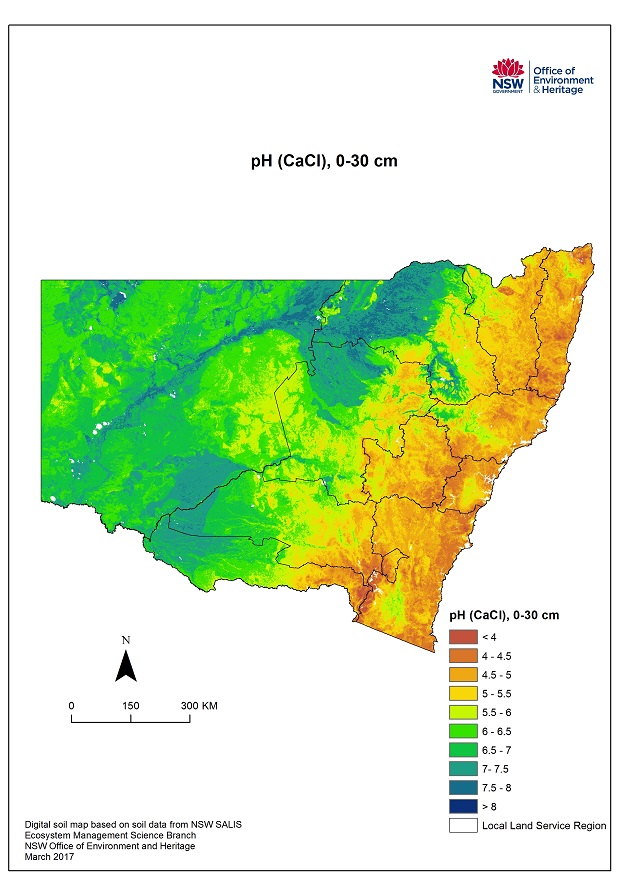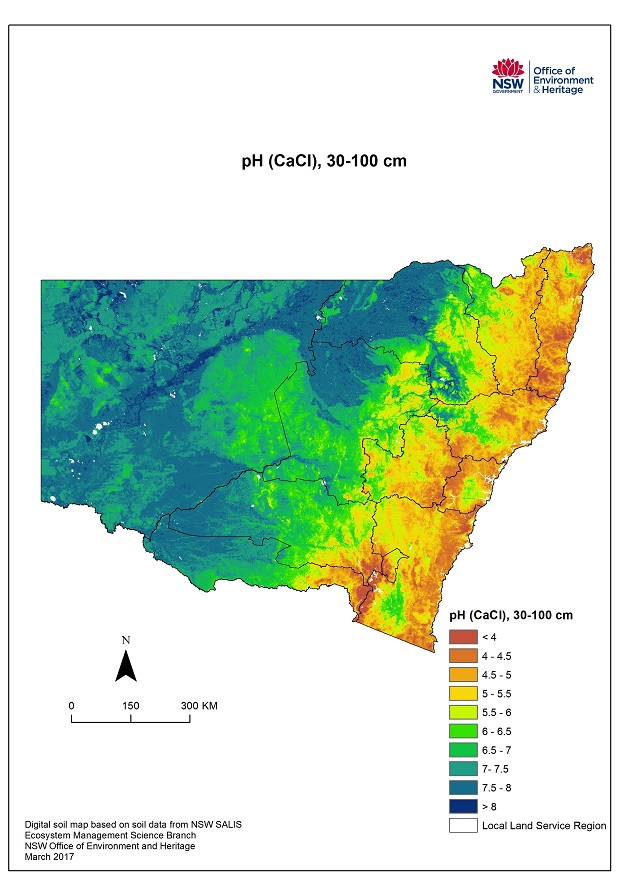
Soil Acidity in NSW
Soil Acidity in NSW
Acidic soils are an impediment to agricultural production. More than half of the intensively used agricultural land in NSW is affected by soil acidity. While soil acidification is a natural consequence of weathering processes of soil formation, today's agricultural practices increase acidification thus placing limitations on future production. In some areas this results in permanent degradation of NSW soils.
Acidic soils are an impediment to agricultural production. More than half of the intensively used agricultural land in NSW is affected by soil acidity. While soil acidification is a natural consequence of weathering processes of soil formation, today's agricultural practices increase acidification thus placing limitations on future production. In some areas this results in permanent degradation of NSW soils.
It has been estimated that the cost of soil acidity in terms of annual lost agricultural production in Australia are A$1,585 million 1. And these costs are most pronounced in the high‐rainfall regions of New South Wales, Victoria and Western Australia where yield gaps have been estimated to be 0.1–0.2 t/ha/yr 2.
The National Land & Water Resources Audit (2001) identified soil acidity as the most serious land degradation issue for Australian agriculture and estimated that 50 million hectares of Australia’s agricultural land are already experiencing impacts from soil acidity in surface layers and a further 23 million hectares in subsurface layers 3. Subsequent State of the Environment reporting shows soil acidification continues to have an increasing impact on soil condition 4.
The maps here give a broad overview of pH levels at two soil profile depths for NSW. However in order to diagnose and manage an acid soil a soil test from a reputable laboratory is required of the individual paddock or landscape element(s).


Maps courtesy of Environment, Energy and Science | Department of Planning, Industry and Environment
OEH 2018. Digital soil mapping of key soil properties over NSW, version 1.2. Technical Report, NSW Office of Environment and Heritage, Sydney. (prepared by J. Gray)

